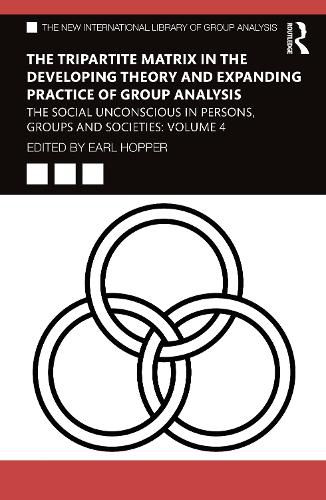Readings Newsletter
Become a Readings Member to make your shopping experience even easier.
Sign in or sign up for free!
You’re not far away from qualifying for FREE standard shipping within Australia
You’ve qualified for FREE standard shipping within Australia
The cart is loading…






The Tripartite Matrix in the Developing Theory and Expanding Practice of Group Analysis explores the social unconscious in persons, groups and societies in terms of the "un-acknowledged" restraints and constraints of our social and cultural groupings.
In this context, Earl Hopper and an international team of contributors elucidate the theory and concept of the tripartite matrix as a tool for the deeper understanding of the human condition and for clinical work in various settings. They consider topics ranging from envy to intersectionality, and from addiction to the inability to mourn.
The Tripartite Matrix in the Developing Theory and Expanding Practice of Group Analysis will be of great interest to group analysts, psychoanalytical group therapists, psychoanalysts and psycho-dramatists, as well as to social scientists more generally. Its extensive bibliography will be of particular value to students.
$9.00 standard shipping within Australia
FREE standard shipping within Australia for orders over $100.00
Express & International shipping calculated at checkout
Stock availability can be subject to change without notice. We recommend calling the shop or contacting our online team to check availability of low stock items. Please see our Shopping Online page for more details.
The Tripartite Matrix in the Developing Theory and Expanding Practice of Group Analysis explores the social unconscious in persons, groups and societies in terms of the "un-acknowledged" restraints and constraints of our social and cultural groupings.
In this context, Earl Hopper and an international team of contributors elucidate the theory and concept of the tripartite matrix as a tool for the deeper understanding of the human condition and for clinical work in various settings. They consider topics ranging from envy to intersectionality, and from addiction to the inability to mourn.
The Tripartite Matrix in the Developing Theory and Expanding Practice of Group Analysis will be of great interest to group analysts, psychoanalytical group therapists, psychoanalysts and psycho-dramatists, as well as to social scientists more generally. Its extensive bibliography will be of particular value to students.